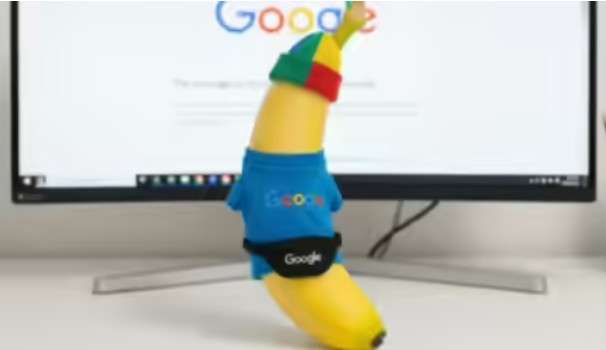Google Nano Banana AI: A Critical Look at Its Pros and Cons

What Is Google Nano Banana AI?
Nano Banana’s getting it done — that’s for sure. It’s a major player for AI image creation. Google Nano Banana AI is the new toy in town. Free to use? That’s a victory for artists, small businesses or anyone just horsing around with creative projects. But before you dive in, there’s a hitch. This tool, like any AI sidekick, has its limits — ones that often don’t end up in the headlines. Okay now, let’s dissect this one without any fluff.
Two Sides of the AI Coin: Safe Vs. Wild
AI image tools are divided in two camps. One’s the cautious one, the way a parent watches you. The other’s a wild way for you to do pretty much whatever. Google Nano Banana AI is squarely in the first camp, and that influences what it can and can’t do.
The Safe Zone: Nano Banana and Friends
These are the tools of the “play it safe” crowd. Think big companies, troubled by how they look. They are built to keep things clean — suitable for families 0 drama. Google Nano Banana AI, ChatGPT 4o, Imagen and Seedream are categorized in this same group.
- How They Work: Web-based — exist on company servers. No downloading, no running it on your laptop. The company determines what’s okay to produce.
- Pros: Super easy to use. Nano Banana has this “subject consistency” thing going on that basically means it nails keeping characters or objects looking the same across different imgs. It’s awesome for commercial stuff — ads, branding — where you can’t take any chances. Reliable, consistent, and no setup headaches.
- Cons: They’re so cautious, in fact, that they can make you feel like you’re in a… straitjacket. Looking to generate a dark n dirty, sci-fi atmosphere? This clean-cut AI might say no if it’s too… violent. A Star Wars fan fantasizing of a lightsaber duel with real blood? Nope, blocked. History nerd craving a battle scene from, say, the Civil War? Good luck — Google Nano Banana AI typically avoids anything that is “too sensitive.” Users on X have complained of prompts getting turned down or going badly. Basically, you trade ethics for flexibility.
The Wild West: Liberty Comes With a Price
On the other side, you’ve tools that let you go nuts. ComfyUI, Midjourney, Stable Diffusion — these are the mavericks of AI img generation.
- How They Work: U can often run these on your own computer — so right there you’re in control. 0 corporate overlord breathing down your neck. They’re open-source or have easy customizations — just tweak them all the way to your heart’s desire.
- Pros: 0 limits seriously. Want a hyper-realistic alien invasion? Done. A dream sequence with dragons and knights? Go for it. These tools don’t give a shit about “ethical guardrails,” so artists adore them for expanding boundaries.
- Cons: They are irritating to set up. Unlike Nano Banana’s plug-and-play vibe, you need some tech know-how. And with great power comes… oh you know. These instruments can produce the bad stuff right along with the good. Companies that need to keep things legit should maybe avoid these tools.
Nano Banana’s Big Pic: What Nano Does Best
Here’s why it keeps drawing people back:
- Usability: You don’t need a tech degree. You sign in, type a prompt, and boom — images. It’s online, so it works on any device with a browser.
- Consistency: Nano Banana’s an expert at making things consistent. If you’re making a logo or a character for a video game, it’s not going to be completely different halfway through the process.
- Free Tier: Everybody loves free, right? For smalltime makers or hobbyists, it is a game changer. You have room to screw around without losing money.
Businesses dig Nano Banana because it eliminates anything that might be a PR disaster. Commercial Safety: No accidental NSFW content here.
Where Nano Banana Falls Short
But let’s not pretend that Google Nano Banana AI isn’t imperfect. It has defects that can make you want to climb the walls, particularly if you’re pursuing some specific thing.
- Picky Prompts: Those ethical guardrails? They’re strict. Putting in a request is like tossing an idea into the universe and hoping Nano Banana sends something back. If you ask for a scene with the kind of raw edge you might find in, say, a post-apocalyptic urban monotony, and Nano Banana could either cough up some generic version or spit it at your feet. Artists on X have referred to it as “too safe” for creating work.
- No Local Control: Because it’s web-based, you’re subject to Google’s whims. No fiddling with the model, no running it offline. If their servers are down, you’re screwed.
- Limited Creativity: Nano Banana’s fantastic for the mundane, but with ultra-unique or out-there ideas, it falls flat. Need a steampunk robot with specific gears and gizmos? What you end up with is just some bare bot.
AI Image Tools Have Bigger Issues
It’s not just Nano Banana. There’s the fact that all AI image generators — not just Google Nano Banana AI — have some universal problems that nobody discusses quite enough.
Accuracy? Not Really
These are not tools designed for precision. If you’re attempting to create something real — for example, a rare plant for a biology project — tough luck. Nano Banana might produce a lovely flower, but it could just as well be dead wrong. Same goes for history. Request a Roman soldier and you may end up with some guy in a toga who’s armed, for no apparent reason, with a circa-2007 piece of sci-fi technology. Dates, details, context? AI doesn’t care.
| Example | What You Want | What You Get |
| Plant | Rare orchid with specific markings | Colorful but wrong species |
| History | Viking warrior, 9th century | Viking with a modern axe |
| Science | Accurate DNA model | Glowy, sci-fi DNA blob |
Fuzzy details
Have you ever wondered why AI images look… abnormal sometimes? You might see an extra finger on a person’s hand or a chair with five legs. Nano Banana and its analogs are pretty bad with small details. The perspective is messed up, textures look strange, and tiny things always look out of focus. And that’s a problem for an AI that’s supposed to be accurate. Why bother? Some people, especially on X, are asking: “Why use Google Nano Banana AI tools at all?” They are amusing for creating great statuses but have no human’s soul. Where are the truth, feelings, and a complete vibe that should be in every great picture? If you hope that AI can fully mimic a human artist, then you were wrong. Nano Banana is good for fast mocks and initial layouts, but no more.
Wrapping It Up
Google Nano Banana AI is significant, no questFion. So easy, so free and so safe; no wonder it’s a go-to for lots of users. But it’s not the end-all AI companion. The rigid filters, inaccuracy, and scattered details really work against it. If those limitations are O.K. with you, then your pal is Nano Banana. If not, you might want to take a look at the “wild west” tools or — hear me out — human imagination for the truly epic stuff. What do you think? Is the hype worth it or is it a mere shiny object?



